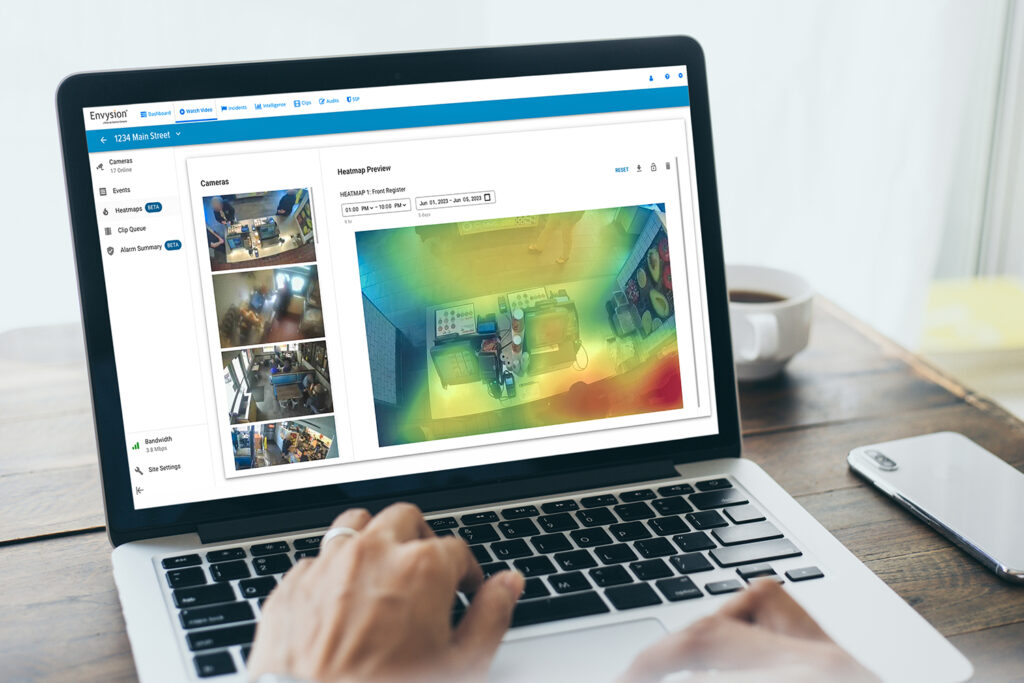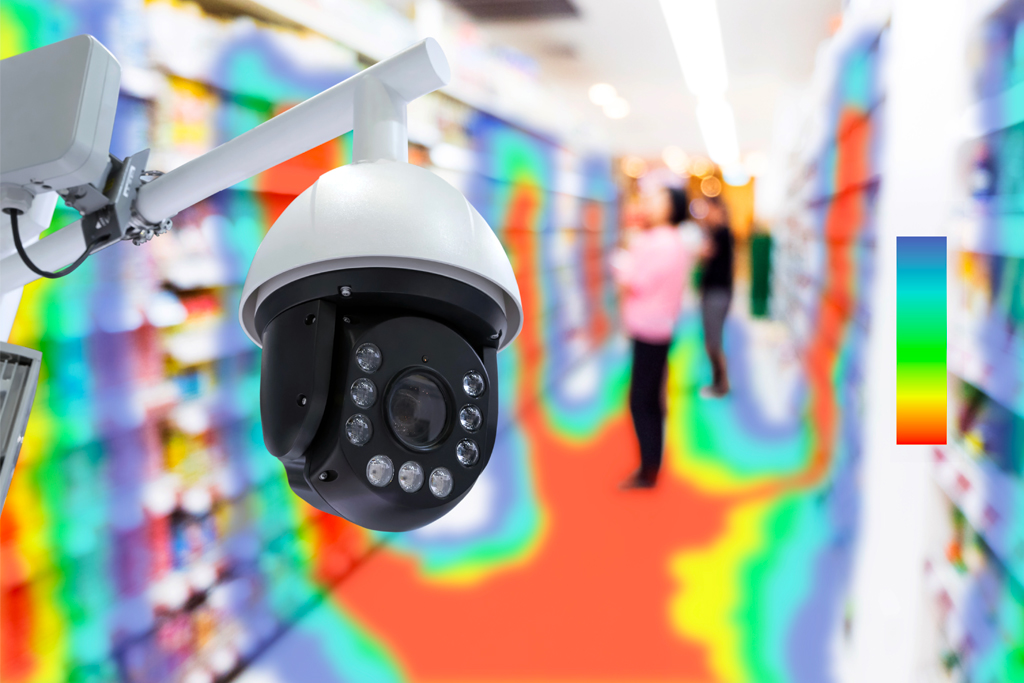Heat Up Your Businesses Performance with Heatmaps
In the fast-paced world of customer service industries, staying ahead of the competition and delivering exceptional customer experiences are crucial to the success of your business. To achieve this, owners and operators are turning to innovative camera technologies that provide valuable insights and drive informed decision-making. One cutting-edge tool that has been changing these customer-facing industries is using cameras for heatmaps.
What Are Heatmaps?
Heatmaps are a powerful tool that provides a visual representation of customer behavior within a business site. They use colors to show where customers spend time, areas most visited, and paths they take while navigating the business. These data maps provide those valuable insights that help business owners improve different aspects of their operations.

Using camera data and heatmaps can improve store layouts, product placement, queue management, marketing strategies, and more. These maps help customer service businesses make smart choices to improve customer experience and succeed in business. Here are the top reasons why your business benefits from using heatmaps:
1. How Heatmaps Help in Identifying High Traffic Areas:
Heatmaps can help businesses, such as restaurants and convenience stores (c-stores) identify the most frequented areas within the establishment. Owners can adjust the layout and position of essential items in a store by studying foot traffic. These essential items include menus, displays, and self-order machines. This ensures that busy areas are utilized to boost customer engagement and increase sales.

2. In-store Customer Behavior:
Heatmaps allow establishments to gain insights into customer behavior within their premises. Customer-facing establishments, like movie theaters and retail stores, can use mapping data to make better decisions. Data from these maps can show where customers spend the most time, where they gather, or which areas they avoid. This information can be utilized when thinking about:
- Menu and signage placements
- Product positioning and location
- Strategic upselling opportunities
To give you an idea, a movie theater marketed a new food vendor with an assortment of snacks and beverages. Despite their efforts, revenue didn’t meet expectations. By using a Heatmaps feature, they identified customer foot traffic patterns after ticket purchase and discovered that the food vendor’s location didn’t align with those patterns. With this in mind, they reorganized the floor plan to attract more moviegoers to increase engagement in the specific area.
3. Evaluate Marketing Campaigns:
Heatmaps can be valuable in assessing the effectiveness of marketing campaigns and promotional activities within a business. By analyzing foot traffic before, during, and after specific campaigns, businesses can measure the impact of their marketing efforts. This data improves marketing plans, focuses on areas to improve, and measures the success of different marketing efforts.
4. Using Heatmaps to Increase Operational Efficiency:
Heatmaps can provide valuable data to help businesses optimize their operations. By identifying bottlenecks, congestion points, or areas with low customer engagement, owners and operators can make data-driven decisions to improve operational flow, streamline processes, and allocate resources more efficiently. This leads to increased productivity, shorter service times, and improved overall efficiency.
For instance, in a quick-service restaurant, during the highest sales period of the day, their Heatmaps revealed that only one register was staffed for order taking, even though five employees were scheduled during that time. The manager decided to shift employee break schedules by 15 minutes to ensure all three registers were staffed for the midday rush. Since then, sales have remained steady and the customer wait time has decreased significantly.
5. How Retailers Can Optimize Their Stores Using Heatmaps
These data maps can help establishment operators optimize the store layout for maximum efficiency. By analyzing customer foot traffic patterns, heatmaps can reveal popular and high-traffic areas within the store. This information can be used to position products, promotions, and displays that drive sales. Further, this information can help find unused or ignored areas, leading to better resource allocation and improved store layout.
To illustrate, a retail store recently redesigned its floor plan to highlight the new summer collection. Using a Heatmaps feature, they compared activity from before the redesign and determined a decrease in foot traffic. Using this data, they decided to switch back to their original layout and noticed a surge in sales.
6. Product Placement and Merchandising:
Heatmaps can offer insights into customer behavior and preferences regarding product placement and merchandising. By tracking where customers spend the most time, for example, convenience store operators can position high-demand items, impulse buys, or promotional products in those areas. Heatmaps can help identify:
- Prime locations for special offers
- Cross-selling opportunities
- Product displays that can capture customers’ attention and encourage additional purchases
Cliff Crosbie, senior vice president of managed services for Prism Skylabs, says, “If you look at the whole floor, you can see exactly where people have walked and where they haven’t, and that gives you a good idea of what’s working and what’s not.” (Business Insider)
7. Detect Customer Flow:
Heatmaps can assist in analyzing customer flow and optimizing queue management in a business. By understanding where customers tend to gather or experience congestion, store owners and operators can make informed decisions to:
- Improve traffic flow
- Minimize bottlenecks
- Reduce customer wait times
- Identify areas that may require additional staff or registers during peak hours

8. Heatmaps Increase Security and Improve Loss Prevention:
These data maps can assist in enhancing security and loss prevention efforts in a customer service type of business. Heatmaps track customer movement to find vulnerable areas, like blind spots or places more likely to have theft or unauthorized access. Store owners can improve surveillance, place cameras better, or add security measures to protect their assets.
In conclusion, using heatmaps in the customer service industries offers numerous benefits that can significantly enhance business performance. These data maps show customer behavior and popular areas, helping businesses make smart choices about store layout, product placement, marketing, operations, and more. With these benefits, heatmaps have become an important tool for businesses seeking to stay ahead in today’s fast-paced and customer-driven landscape.
Ready to heat up your business? Let’s connect!
